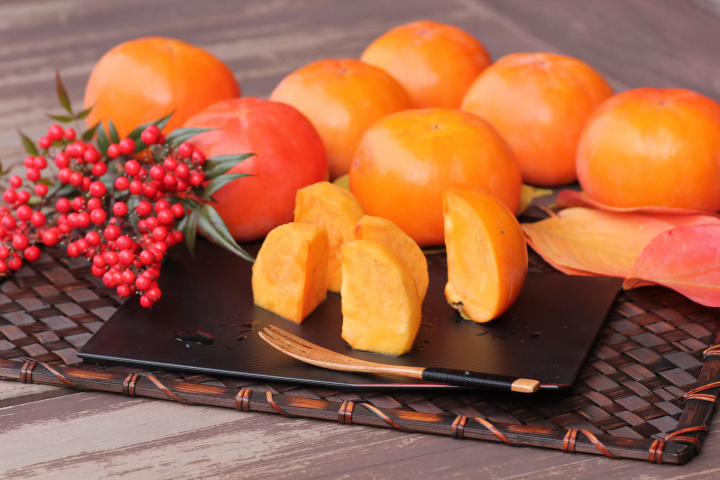As autumn arrives, persimmons star appearing on store shelves across Japan. If you want to eat delicious persimmons, or haven't tried persimmons yet, now is the best time to head to Wakayama! We'll be discussing Wakayama's Persimmons in this article!
2025.10.10-
Table of Contents
- Secrets to Growing Delicious Persimmons
- Wakayama's Persimmon Representatives
- How do you spot a Delicious Persimmon at a glance?
- “When persimmons turn red, doctors turn pale”!? Nature’s health food
Secrets to Growing Delicious Persimmons
When speaking of delicious autumn fruits in Japan, persimmons come to mind. Wakayama is especially famous for persimmons. But why exactly are they famous? One of the reasons is the soil and climate.
In particular, the Ito region of Wakayama Prefecture has the following conditions, which allow the fruit to grow large and sweet! In particular,
- Excellent balance of water Retention and Drainage
- Large temperature differences between day and night from summer to autumn
- Abundant light pours onto the fields on the slopes of the hills
Wakayama's Persimmon Representatives
There are three types of persimmon fruits that we'd like to present.
① Seedless Persimmons
These are juicy with a moderately soft, smooth texture, strong sweetness, and a rich flavor. As the name suggests, they have no seeds.
For eating them raw, the astringency is removed after harvest using carbon dioxide etc. Processed foods made from astringent persimmons include dried persimmons, dried dried persimmons, dried persimmons, and persimmon vinegar. To further categorize,
- "Toneyasegaki": The early-ripening variety of persimmon with the highest production volume (shipping period is mid-September to early October)
- "Nakatani Wase Gaki": An extremely early variety that is shipped the earliest among outdoor-grown varieties (shipping period is early to mid-September)
- "Hiratanenashi" Persimmons: Shipped from mid-October to early November
② Kinokawa Persimmons
Produced in places like Kinokawa City, Wakayama, Kinokawa persimmons are characterized by a firm bite and full, ripe sweetness. Because their cultivation requires extra steps compared to typical persimmons, they are rare and regarded as a high-end fruit even among Japanese consumers.
Generally, astringent persimmons are removed after harvest, but Kinokawa persimmons are removed by covering each fruit individually with a bag containing solid alcohol while they are still on the tree before harvest. The fruit is then left to ripen fully before being harvested, resulting in a high sugar content and distinctive black spots on the flesh . Because bagging is time-consuming, production is low, making this a rare variety (shipping period: early to mid-November).
③ Fuyu Persimmons
This is the most popular and representative variety of sweet persimmon.
It is characterized by its high juice content, strong sweetness, and crunchy texture. The fruit is large, plump, and round, has a long shelf life, and has an orange-yellow skin (shipping period: early November to early December).

How do you spot a Delicious Persimmon at a glance?
A delicious persimmon has taut skin, good coloration, and tends to be on the larger side.
Also pay attention to the calyx (the leafy top). If the calyx is damaged or missing, growth can be inhibited. Choose fruits with a large calyx that sits snugly against the fruit with no gaps.
“When persimmons turn red, doctors turn pale”!? Nature’s health food
Persimmons are very packed in nutrients.
One persimmon provides nearly the daily required amount of vitamin C. They also contain tannins, a type of polyphenol believed to have strong antioxidant effects. Persimmons may help flush out substances that cause hangovers, so some say eating them before drinking can help prevent getting too drunk.
Why not take this opportunity to try some Wakayama persimmons?
The contents on this page may partially contain automatic translation.

![[Wakayama Guide] Autumn in Kansai means Wakayama Persimmons!の画像](https://resources.matcha-jp.com/resize/720x2000/2025/09/17-244556.webp)